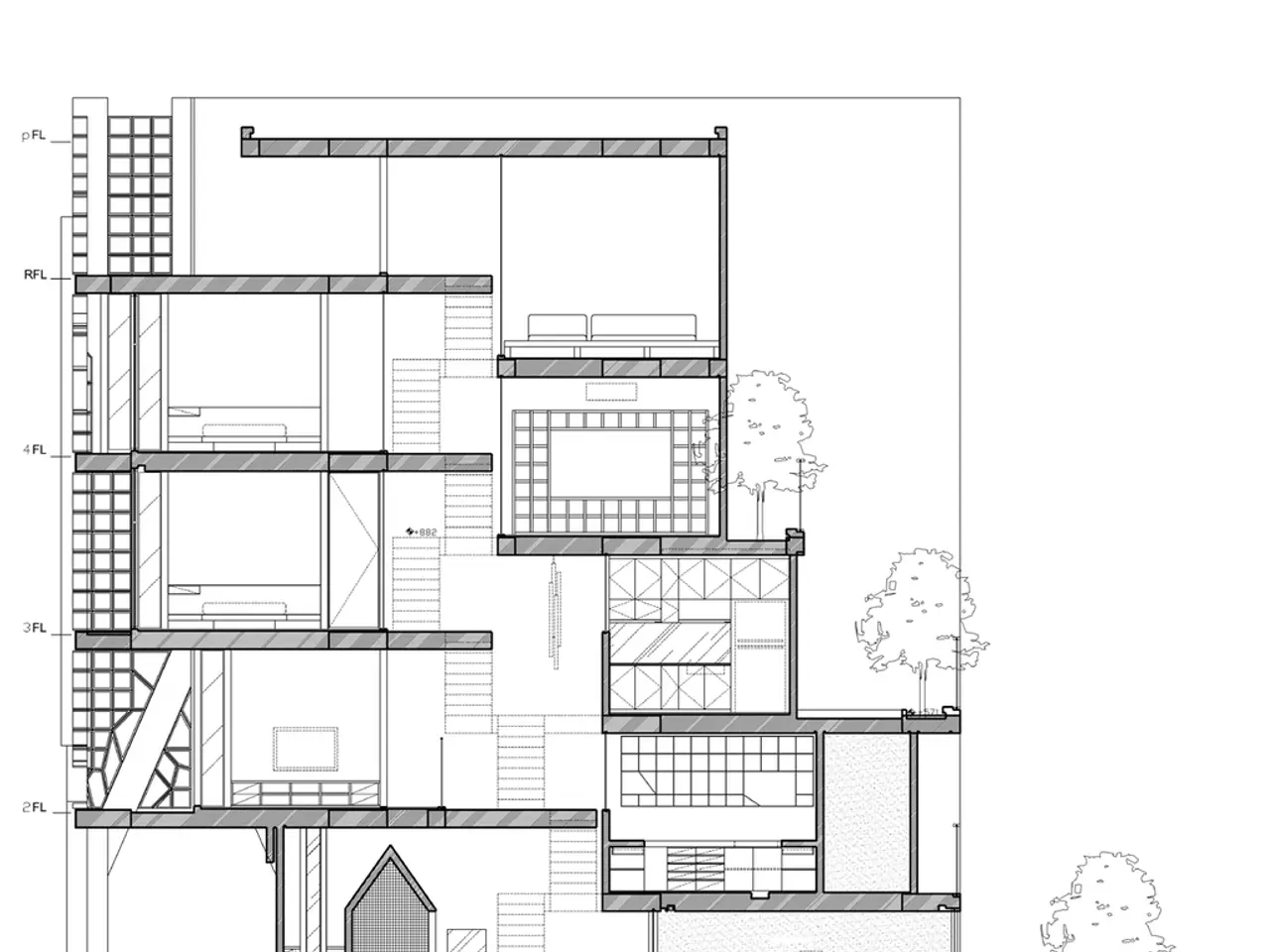Buildings able to breathe and consume CO2: Scientists develop a 3D-printed material that absorbs carbon dioxide.
**Groundbreaking Carbon Capturing Material Unveiled by ETH Zurich Researchers**
In a significant leap towards sustainable architecture and carbon capture technology, researchers at ETH Zurich have developed a living material that can grow, harden, and remove carbon dioxide from the atmosphere while staying alive. This innovative material, which relies on cyanobacteria, ancient microbes capable of efficient photosynthesis even under low light, has been showcased at the Venice Architecture Biennale.
The material, based on a water-rich hydrogel, allows light, CO₂, water, and nutrients to pass through, supporting microbial life and enabling the bacteria to remain active for over 400 days. As the bacteria photosynthesize, they change the chemical environment outside their cells, prompting the formation of solid carbonates such as lime.
Cyanobacteria are among the oldest life forms on Earth and are highly efficient at photosynthesis, able to utilize even the weakest light to produce biomass from CO₂ and water. The team at ETH Zurich uses 3D printing to create high-surface-area structures that enhance light penetration and nutrient distribution, allowing the bacteria to thrive.
Laboratory tests showed that the material continuously binds CO₂ for 400 days. Most of it is in mineral form - around 26 milligrams of CO₂ per gram of material. Each experimental tower can bind up to 18 kilograms of CO₂ per year, roughly equivalent to the annual carbon capture of a 20-year-old pine tree in a temperate climate.
At the Canadian Pavilion, the team used the printed gel to create two tree-trunk-like structures, the tallest reaching around three meters in height. The experimental material, exhibited at the Venice Architecture Biennale, has captured the imagination of architects, offering a promising solution for integrating carbon capture into building design.
The material offers both environmental benefits and unique architectural possibilities. It can capture up to 18 kilograms of CO₂ per year, similar to a young pine tree. As the cyanobacteria form minerals, the material gradually hardens, becoming stronger over time, making it suitable for architectural applications. The use of cyanobacteria and hydrogel provides a low-energy, eco-friendly method for carbon capture, aligning with sustainable architectural goals.
Researcher Tibbitt expresses interest in investigating the material's potential use as a coating for building facades to bind CO₂ throughout a building's life cycle. The team views the living material as a low-energy, environmentally friendly alternative to more industrial forms of carbon capture.
This innovative material opens new avenues for integrating carbon capture into building design, offering both environmental benefits and unique architectural possibilities. The research and development in this area are ongoing, and it is expected that we will see more applications of this groundbreaking technology in the near future.
- This groundbreaking living material, discovered by ETH Zurich researchers, not only has the potential to revolutionize sustainable architecture but also serves as an innovative approach to combating climate change by capturing carbon dioxide, making it a significant contribution to both health-and-wellness and environmental-science.
- The marriage of technology and environmental-science in the creation of this material presents exciting possibilities for fitness-and-exercise, as the carbon-capturing capability could potentially be extended to activewear, contributing to healthier lifestyles while reducing carbon footprints.
- The integration of this carbon-capturing technology into building design could have a substantial impact on the reduction of greenhouse gas emissions, thereby helping to mitigate climate-change effects and promoting a more eco-friendly lifestyle in the realm of health-and-wellness and fitness-and-exercise.




